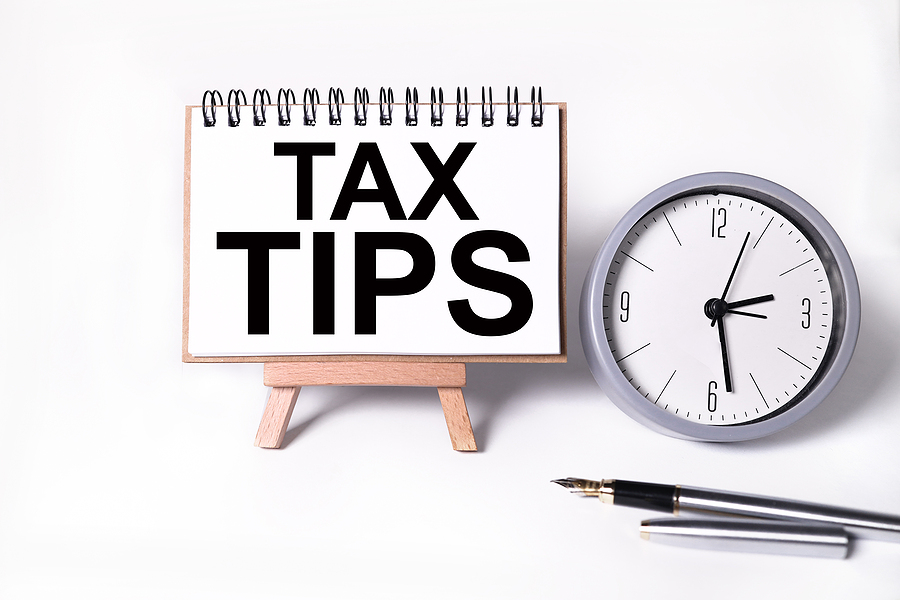As tax season approaches, many taxpayers are looking for ways to maximize their refunds. In 2025, several strategies can help reduce your taxable income, take advantage of credits and deductions, and ultimately increase the amount you get back. Whether you’re filing as an individual or for a business, it pays to be prepared. Here’s a comprehensive guide with the top tax tips for 2025 to help you maximize your refund.
1. Understand New Tax Law Changes for 2025
Each year, tax laws can change, affecting everything from income tax brackets to eligible deductions. Staying informed about any updates or changes is crucial, especially with some anticipated adjustments to tax brackets and deduction limits in 2025. Check for updates from the IRS website, consult a tax professional, or use trusted tax preparation software to stay on top of any changes. Understanding the current rules can prevent costly mistakes and make sure you claim all possible benefits.

2. Increase Your Retirement Contributions
One of the best ways to reduce your taxable income is by contributing to retirement accounts like a 401(k) or a traditional IRA. Contributions to these accounts are typically tax-deductible, reducing your adjusted gross income (AGI) and, consequently, your tax burden. For 2025, the IRS may have adjusted contribution limits, so check the maximum amount you can contribute. This can also provide double benefits: not only do you lower your tax liability, but you also invest in your future.
3. Maximize Education Credits and Deductions
If you or a dependent is in school, take advantage of education-related tax benefits, including the American Opportunity Credit, Lifetime Learning Credit, and the student loan interest deduction. Each offers valuable deductions or credits that can directly reduce the amount you owe. To qualify for the American Opportunity Credit, make sure you’re an eligible student enrolled at least half-time. Meanwhile, the Lifetime Learning Credit applies to a broader range of educational expenses. Keep all tuition receipts, and make sure to explore which credit maximizes your refund.
4. Leverage Health Savings Accounts (HSAs) and Flexible Spending Accounts (FSAs)
Budgeting Hacks for 2025: How to Stretch Your Dollars Further
HSAs and FSAs are tax-advantaged accounts that allow you to save pre-tax money for healthcare expenses. Contributions to these accounts reduce your taxable income and can be a powerful tool for maximizing tax refunds. HSAs are available to people with high-deductible health plans, and contributions can roll over year-to-year. FSAs, on the other hand, are “use-it-or-lose-it,” so any unused funds don’t roll over to the next year. Maxing out contributions to these accounts can lower your tax bill while ensuring you’re prepared for medical expenses.
5. Don’t Overlook the Earned Income Tax Credit (EITC)
The Earned Income Tax Credit is a refundable credit aimed at low- to moderate-income workers. Unfortunately, millions of eligible taxpayers overlook this credit each year. The EITC amount varies based on your income, marital status, and number of dependents. In 2025, the income limits and credit amounts might have adjusted, so verify your eligibility to ensure you’re not missing out. Remember, the EITC is refundable, meaning you can receive the full credit even if it exceeds your tax liability.
6. Track Home Office Deductions Carefully
With more people working remotely, the home office deduction has become increasingly relevant. This deduction can apply if you’re self-employed and use part of your home exclusively for business. While the deduction can significantly lower your taxable income, the IRS has strict guidelines on what qualifies as a home office. The area must be used exclusively and regularly for work, and you can choose between the simplified deduction (based on square footage) or the actual expenses method. Record your home office expenses carefully to avoid IRS audits and ensure you’re maximizing your deduction.
7. Take Advantage of Clean Energy Tax Credits

With an increased focus on sustainability, the IRS offers tax credits for clean energy improvements and electric vehicle purchases. In 2025, you can receive tax credits for installing solar panels, geothermal heat pumps, or wind turbines on your property. Additionally, purchasing an electric vehicle may qualify for a tax credit. These credits directly reduce your tax liability, making them incredibly valuable. If you’re considering energy-efficient upgrades or buying an eco-friendly car, these credits can make a significant impact on your refund.
8. Keep Track of Charitable Donations
Charitable contributions are a well-known way to reduce taxable income, but it’s essential to document these donations properly to maximize their benefit. In 2025, keep receipts or confirmation letters for each donation you make, including cash donations and the fair market value of any non-cash contributions like clothing or furniture. Some taxpayers may also be eligible for a charitable deduction even if they take the standard deduction. Always consult the latest IRS rules on charitable donations to ensure you’re maximizing your contributions.
9. Consider the Saver’s Credit
The Saver’s Credit is a lesser-known credit aimed at low- and moderate-income taxpayers who contribute to retirement accounts. This credit directly reduces your tax bill and can be worth up to $1,000 ($2,000 for married couples filing jointly). The Saver’s Credit is in addition to other tax benefits you get for contributing to retirement accounts, offering even more potential savings. For 2025, check if you qualify based on income limits and remember that even small contributions can make a difference.
10. Make Use of Business Deductions If You’re Self-Employed
If you’re self-employed, numerous business deductions can help lower your taxable income. These include costs related to office supplies, travel expenses, vehicle mileage, marketing, and utilities. For 2025, make sure you’re keeping detailed records and receipts to substantiate these deductions. Additionally, the Qualified Business Income (QBI) deduction offers self-employed individuals and small business owners a deduction of up to 20% on qualified business income. Consult a tax professional to fully understand and maximize your business deductions.
11. Claim the Child Tax Credit and Dependent Care Credit
For parents, the Child Tax Credit and the Child and Dependent Care Credit offer significant tax savings. The Child Tax Credit, in particular, is partially refundable, meaning you could receive a refund even if the credit exceeds your tax liability. The Dependent Care Credit, on the other hand, allows you to claim a percentage of childcare expenses for children under age 13. If you’ve paid for daycare, summer camp, or after-school programs, make sure to include these expenses in your tax return.
12. Harvest Losses to Offset Capital Gains
If you invest in stocks or other assets, you can use tax-loss harvesting to offset capital gains and reduce your taxable income. This involves selling investments at a loss to counterbalance gains from profitable investments. The IRS allows up to $3,000 in net capital losses to offset ordinary income each year. However, keep in mind the “wash sale” rule, which disallows the deduction if you buy a substantially identical asset within 30 days of selling it. Consulting a financial advisor can help you strategize effectively.
13. Utilize the Standard Deduction or Itemize Strategically

In 2025, the standard deduction may increase slightly, making it essential to consider whether to take it or itemize it. Many taxpayers choose the standard deduction due to its simplicity, but if you have substantial deductions—like mortgage interest, property taxes, or medical expenses—you may benefit more from itemizing. Run the numbers to see which method reduces your tax burden the most. Keep in mind that some itemized deductions are limited by your income, so weigh your options carefully.
14. Explore State Tax Credits
Apart from federal deductions and credits, many states offer tax incentives for various expenses, including education, childcare, or clean energy initiatives. These credits vary significantly depending on where you live, so researching your state’s tax benefits can provide additional savings. Taking advantage of these credits can increase your total refund amount and make a noticeable impact on your final tax bill.
Financial Freedom in 2025: Top Money-Saving Tips You Need to Know
15. File Electronically and Choose Direct Deposit
Filing your taxes electronically and opting for direct deposit can expedite the processing of your tax return and refund. The IRS processes e-filed returns faster than paper filings, often resulting in quicker refunds. Additionally, direct deposit is safer and more efficient than receiving a paper check. If you’re expecting a refund, using these methods ensures you get your money as soon as possible.
16. Review and Double-Check Your Tax Return
Before filing, take the time to review your tax return thoroughly. Errors, even minor ones, can delay processing or reduce your refund. Simple mistakes such as typos, missing Social Security numbers, or overlooked deductions can result in costly errors. Use tax preparation software with an error-checking feature, or consult a tax professional to ensure accuracy. This final step is crucial to ensure you get the maximum refund without delay.
.jpeg)
Maximizing your refund in 2025 doesn’t have to be complex. By staying informed on tax law changes, utilizing deductions and credits, and planning strategically, you can increase your refund significantly. Consider consulting a tax professional, especially if you have a complex financial situation or are self-employed. With the right approach, tax season can be an opportunity to keep more money in your pocket and take full advantage of every benefit available.



